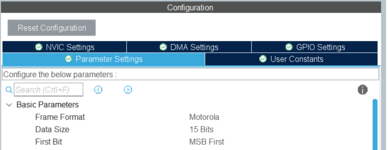MD18
Junior Member level 3
Hello,
I have to interface the ADS7046 12-Bit, 3-MSPS, Single-Ended Input, Small-Size, Low-Power SAR ADC. Spi compatible ADC 12 bit resolution and MSPS.
1.How to set its data size in spi configuration?
**broken link removed** datasheet they did not give the clock polarity which then I have to set?

2.Its maximum clock is 3MHz how to set ? I have to set less than 3Mhz clock to spi.
3.CS pin is GPIO is set ,in that I have to also manage the clock of GPIO?
4.First two bits is getting zero after that 12 bit is sampled after it get two zero. Then I have shifting the data to remove. the zeros.
I have to interface the ADS7046 12-Bit, 3-MSPS, Single-Ended Input, Small-Size, Low-Power SAR ADC. Spi compatible ADC 12 bit resolution and MSPS.
1.How to set its data size in spi configuration?
**broken link removed** datasheet they did not give the clock polarity which then I have to set?
2.Its maximum clock is 3MHz how to set ? I have to set less than 3Mhz clock to spi.
3.CS pin is GPIO is set ,in that I have to also manage the clock of GPIO?
4.First two bits is getting zero after that 12 bit is sampled after it get two zero. Then I have shifting the data to remove. the zeros.
